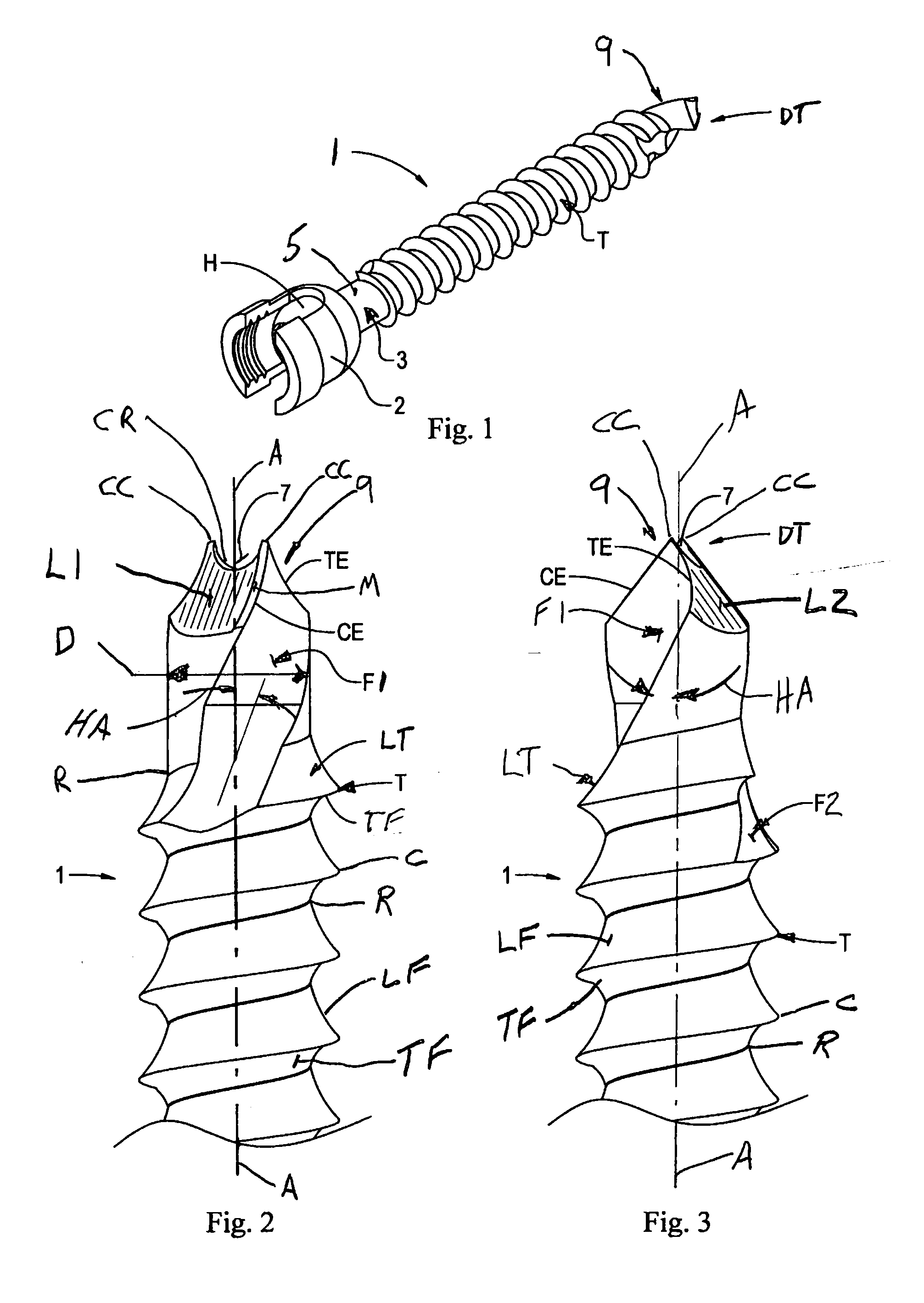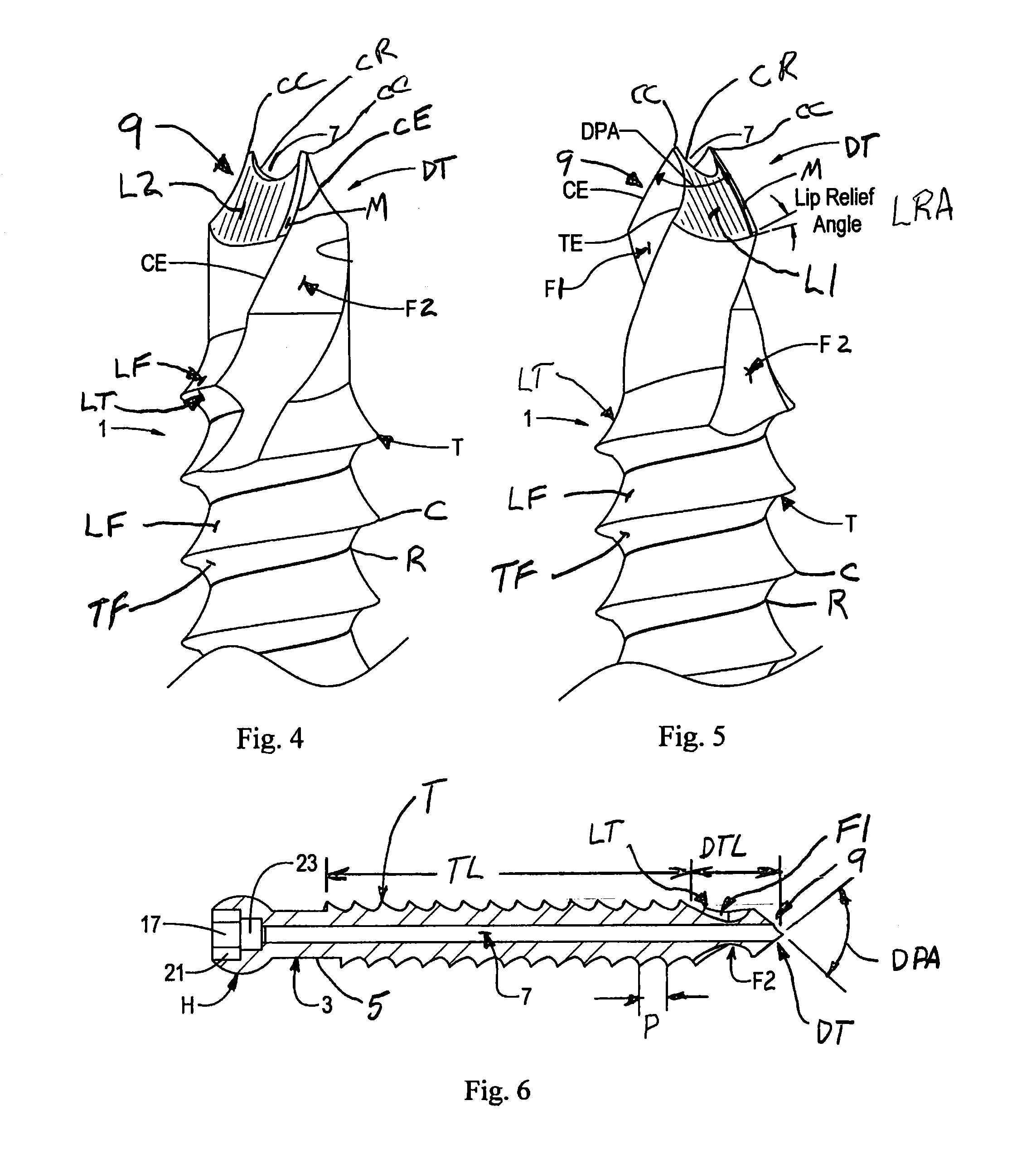Self drilling, self-tapping bone screw and method of installing for bicortical purchase
a self-tapping, bone screw technology, applied in the direction of prosthesis, ligaments, osteosynthesis devices, etc., can solve the problems of not being able to achieve such bicortical purchase of bone screws in the sacrum, not being able to drill pilot holes through the distal anterior cortical bone margin without drilling
- Summary
- Abstract
- Description
- Claims
- Application Information
AI Technical Summary
Benefits of technology
Problems solved by technology
Method used
Image
Examples
Embodiment Construction
[0037]Referring now to FIG. 1, a self-drilling, self-tapping bone screw, such as a pedicle screw, of the present disclosure is illustrated in its entirety by reference character 1. Screw 1 is a fully cannulated screw that has a part-spherical proximal driving head H for the attachment of a poly-axial saddle 2 (shown in phantom) or other accessory that is conventionally used in spinal surgery. The part-spherical head H allows the saddle 2 or other such appliance to be solidly mounted on the screw, but yet allows the saddle to readily swivel with respect to the screw. Those skilled in the art will recognize that head H and saddle 2 may be of different designs or shapes and may serve different purposes. Screw 1 has a shank, as generally indicated at 3, extending distally from the head. A portion of the shank 3, as indicated by the dimension labeled as thread length TL in FIG. 6, has threads T formed or machined therealong. As indicated at 5, the proximal portion of the shank between th...
PUM
| Property | Measurement | Unit |
|---|---|---|
| Angle | aaaaa | aaaaa |
| Angle | aaaaa | aaaaa |
| Thickness | aaaaa | aaaaa |
Abstract
Description
Claims
Application Information
 Login to View More
Login to View More - R&D
- Intellectual Property
- Life Sciences
- Materials
- Tech Scout
- Unparalleled Data Quality
- Higher Quality Content
- 60% Fewer Hallucinations
Browse by: Latest US Patents, China's latest patents, Technical Efficacy Thesaurus, Application Domain, Technology Topic, Popular Technical Reports.
© 2025 PatSnap. All rights reserved.Legal|Privacy policy|Modern Slavery Act Transparency Statement|Sitemap|About US| Contact US: help@patsnap.com



